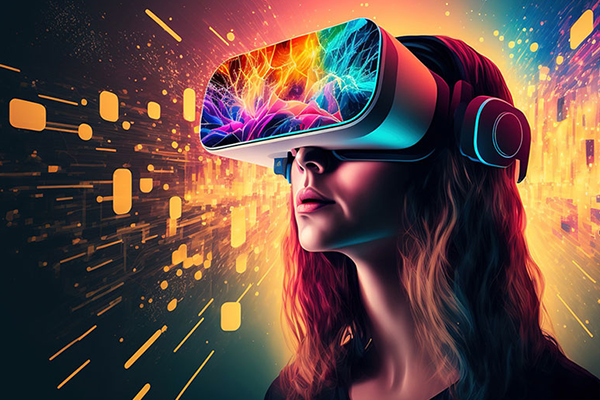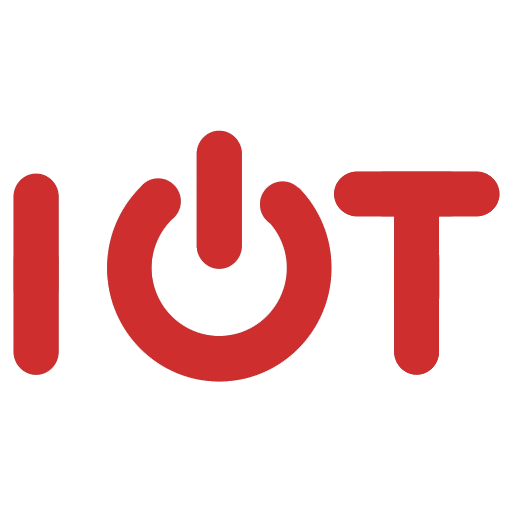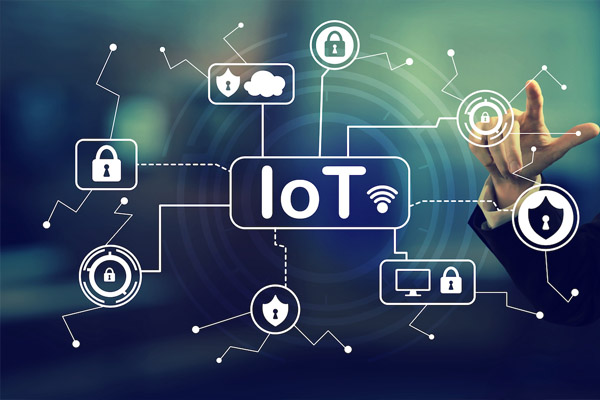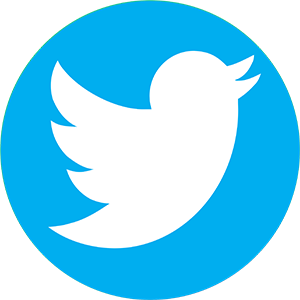close

484 Views - 04/07/2023
 Application and impact of information technology in health care
Application and impact of information technology in health care
Application and impact of information technology in health care
IT is applied in many ways to upgrade the health system, support patients to receive medical examination and treatment and health care in the most comprehensive way.
 Application and impact of information technology in health care
Application and impact of information technology in health care
In the 4.0 period, information technology (IT) affects most areas of life, medical examination and treatment and healthcare are no exception. IT has brought significant transformations to the healthcare industry.
From checking the patient's health status to updating records and electronic medical records, IT has been bringing leaps and bounds to the medical industry. Experts estimate that by 2024, the IT Healthcare market can reach $390.7 billion.
What is healthcare information technology?
When we think of IT, we usually think of the use of computers, telecommunications, and other systems to collect, process, store, retrieve, and share information. Healthcare Information Technology (HIT) refers to the effective and safe use of technology to manage information related to medical examination and treatment activities and a patient's health status.
The main purpose of applying information technology in healthcare is to improve and personalize the journey of medical examination and treatment and patient care. HIT allows doctors to connect, communicate effectively with patients, maintain privacy and help patients recover better.
Importance of information technology in healthcare
The ultimate goal of applying IT in health is to improve the general health of the people through effective medical examination and treatment, care and training activities.
With medical examination and treatment services and health care, information technology plays the role of:
Provide more accurate information, providing tailored approaches and treatments that can be customized to meet each individual's needs.
Enables faster decision-making regarding the health risks of individuals and the public.
Helping patients communicate more easily with healthcare professionals. Build social support networks for both patients and professionals.
Raise community awareness on issues related to medical examination and treatment and health care.
Application of information technology in health and health care
IT is applied in many ways to upgrade the health system, support patients to receive medical examination and treatment and health care in the most comprehensive way.
Electronic records
One of the most notable uses of HIT is patient data and record management. In the past, paper records were commonly used. However, paper records are easy to lose or damage over time.
IT makes it easier for doctors to keep track of medical records. Doctors, nurses and aides can add information about test results, scans, take medications, build virtual charts to monitor health status.
According to surveys, medical staff using electronic records save a lot of time for taking notes, and at the same time minimize errors in data entry.
Patient portal
The Patient Portal is an online application. The system provides patients with access to their personal health information records and two-way electronic communication with a healthcare provider using a computer or mobile device.
Many studies have shown that e-portals have improved outcomes of care and prevention, helping the community to raise disease awareness and self-managing health more effectively.
Remote monitoring, medical examination and treatment
The Covid-19 pandemic has had a strong impact on the shift from face-to-face medical examination to telemedicine. Many applications combine Artificial Intelligence (AI - Artificial Intelligence), Internet of Things (IoT - Internet of Things), ... to help connect patients with medical professionals through mobile devices, computers. .
The form of remote medical examination and treatment helps limit contact during the epidemic, saving travel time, waiting in line for a number.
In addition, medical professionals can monitor patients remotely, communicate and exchange status continuously. This form of medical care improves outcomes for patients with chronic conditions, including: Heart failure, stroke, chronic obstructive pulmonary disease (COPD), asthma, and hypertension.
Research shows that telemedicine improves clinical outcomes for many patients, enhances community access to healthcare services, and fosters collaboration between patients and doctor.
Medical orders and electronic prescriptions
Doctors can use computer platforms or mobile devices to give orders and prescriptions. Computerized doctor's order entry system, developed to improve the safety of prescriptions. In addition, more modern systems allow electronic scheduling of tests, procedures and consultations.
A physician's electronic order entry system is often integrated with a Clinical Decision Support (CDS) system. It acts as an error prevention tool, by instructing prescribers on how much to take, how to take it, and how often to use it.
In addition, some computerized Physician Order Entry (CPOE) systems may have the feature to remind prescribers of a patient's allergies, medication side effects, etc.
Clinical decision support
Clinical decision support information technology provides healthcare professionals with patient-specific information. This information is carefully selected and accurate.
The application of IT in clinical decision support includes a range of tools that enhance decision-making and clinical workflow efficiency. These tools include: Care provider and patient notifications, alerts and reminders; clinical guidelines, giving indications by condition; patient-specific clinical summary; Provide document samples, support investigation and diagnosis,...
Manage drug barcodes
Drug barcode management system is an electronic system that integrates electronic drug management records with barcode technology. These systems prevent medication errors by ensuring that patients receive the right medication at the right time.
Field surveys show that barcode drug management when integrated with electronic drug management records can reduce medication administration errors by 50% to 80%.
Intelligent transmission pump
The smart intravenous pump is equipped with anti-drug software. This software alerts the operator when the infusion setting is out of pre-configured safe limits.
Automated drug dispensing technology
Automated dispensing cabinets (ADCs) are electronic medicine cabinets that help store medications at the point of care, making drug dispensing controlled and closely monitored.
Automated dispensing cabinets were widely used in hospitals in the 1980s. Over time, the technology was developed with more sophisticated software and digital interfaces to synthesize risky steps. high risk in the drug dispensing process.
Automated dispensing cabinets have been successfully used as a tool for inventory management. This technology helps to automate the dispensing process, reduce the workload at the central pharmacy, and better track drug dispensing and patient payments.
From checking the patient's health status to updating records and electronic medical records, IT has been bringing leaps and bounds to the medical industry. Experts estimate that by 2024, the IT Healthcare market can reach $390.7 billion.
What is healthcare information technology?
When we think of IT, we usually think of the use of computers, telecommunications, and other systems to collect, process, store, retrieve, and share information. Healthcare Information Technology (HIT) refers to the effective and safe use of technology to manage information related to medical examination and treatment activities and a patient's health status.
The main purpose of applying information technology in healthcare is to improve and personalize the journey of medical examination and treatment and patient care. HIT allows doctors to connect, communicate effectively with patients, maintain privacy and help patients recover better.
Importance of information technology in healthcare
The ultimate goal of applying IT in health is to improve the general health of the people through effective medical examination and treatment, care and training activities.
With medical examination and treatment services and health care, information technology plays the role of:
Provide more accurate information, providing tailored approaches and treatments that can be customized to meet each individual's needs.
Enables faster decision-making regarding the health risks of individuals and the public.
Helping patients communicate more easily with healthcare professionals. Build social support networks for both patients and professionals.
Raise community awareness on issues related to medical examination and treatment and health care.
Application of information technology in health and health care
IT is applied in many ways to upgrade the health system, support patients to receive medical examination and treatment and health care in the most comprehensive way.
Electronic records
One of the most notable uses of HIT is patient data and record management. In the past, paper records were commonly used. However, paper records are easy to lose or damage over time.
IT makes it easier for doctors to keep track of medical records. Doctors, nurses and aides can add information about test results, scans, take medications, build virtual charts to monitor health status.
According to surveys, medical staff using electronic records save a lot of time for taking notes, and at the same time minimize errors in data entry.
Patient portal
The Patient Portal is an online application. The system provides patients with access to their personal health information records and two-way electronic communication with a healthcare provider using a computer or mobile device.
Many studies have shown that e-portals have improved outcomes of care and prevention, helping the community to raise disease awareness and self-managing health more effectively.
Remote monitoring, medical examination and treatment
The Covid-19 pandemic has had a strong impact on the shift from face-to-face medical examination to telemedicine. Many applications combine Artificial Intelligence (AI - Artificial Intelligence), Internet of Things (IoT - Internet of Things), ... to help connect patients with medical professionals through mobile devices, computers. .
The form of remote medical examination and treatment helps limit contact during the epidemic, saving travel time, waiting in line for a number.
In addition, medical professionals can monitor patients remotely, communicate and exchange status continuously. This form of medical care improves outcomes for patients with chronic conditions, including: Heart failure, stroke, chronic obstructive pulmonary disease (COPD), asthma, and hypertension.
Research shows that telemedicine improves clinical outcomes for many patients, enhances community access to healthcare services, and fosters collaboration between patients and doctor.
Medical orders and electronic prescriptions
Doctors can use computer platforms or mobile devices to give orders and prescriptions. Computerized doctor's order entry system, developed to improve the safety of prescriptions. In addition, more modern systems allow electronic scheduling of tests, procedures and consultations.
A physician's electronic order entry system is often integrated with a Clinical Decision Support (CDS) system. It acts as an error prevention tool, by instructing prescribers on how much to take, how to take it, and how often to use it.
In addition, some computerized Physician Order Entry (CPOE) systems may have the feature to remind prescribers of a patient's allergies, medication side effects, etc.
Clinical decision support
Clinical decision support information technology provides healthcare professionals with patient-specific information. This information is carefully selected and accurate.
The application of IT in clinical decision support includes a range of tools that enhance decision-making and clinical workflow efficiency. These tools include: Care provider and patient notifications, alerts and reminders; clinical guidelines, giving indications by condition; patient-specific clinical summary; Provide document samples, support investigation and diagnosis,...
Manage drug barcodes
Drug barcode management system is an electronic system that integrates electronic drug management records with barcode technology. These systems prevent medication errors by ensuring that patients receive the right medication at the right time.
Field surveys show that barcode drug management when integrated with electronic drug management records can reduce medication administration errors by 50% to 80%.
Intelligent transmission pump
The smart intravenous pump is equipped with anti-drug software. This software alerts the operator when the infusion setting is out of pre-configured safe limits.
Automated drug dispensing technology
Automated dispensing cabinets (ADCs) are electronic medicine cabinets that help store medications at the point of care, making drug dispensing controlled and closely monitored.
Automated dispensing cabinets were widely used in hospitals in the 1980s. Over time, the technology was developed with more sophisticated software and digital interfaces to synthesize risky steps. high risk in the drug dispensing process.
Automated dispensing cabinets have been successfully used as a tool for inventory management. This technology helps to automate the dispensing process, reduce the workload at the central pharmacy, and better track drug dispensing and patient payments.
Most Viewed

Application and impact of information technology in health care
485 Views - 04/07/2023

Apple is serious about Industry 4.0
465 Views - 04/07/2023

Apple is serious about Industry 4.0
465 Views - 04/07/2023

IT Execs shares a strategy for managing digital and cyber trends in 2023
392 Views - 04/07/2023

IT Execs shares a strategy for managing digital and cyber trends in 2023
392 Views - 04/07/2023

The smart home jury has yet to make a point, AI can help
391 Views - 04/07/2023
# Tag
News in the same category

10 best IoT Industry 4.0 use cases for manufacturing
131 Views - 04/07/2023

Application and impact of information technology in health care
485 Views - 04/07/2023

4 Stages of information technology application in business
226 Views - 04/07/2023

The Internet of Things (IoT) is transforming the world around us. It is changing products, business processes - even the way businesses interact with their customers.
155 Views - 04/07/2023



























